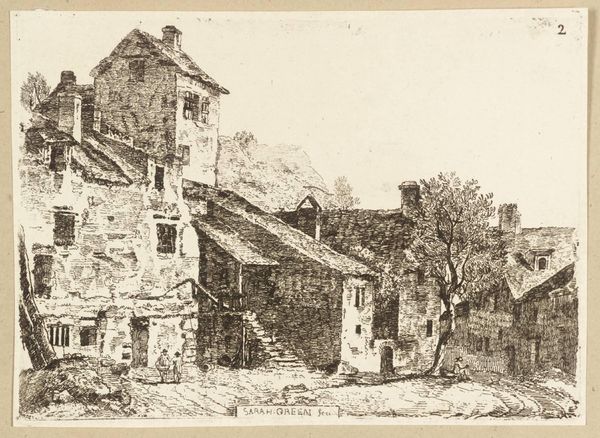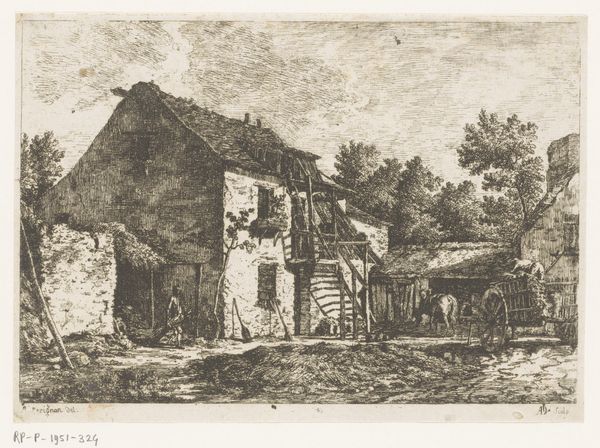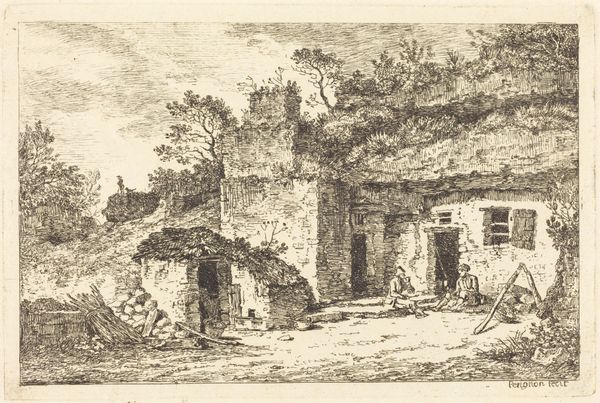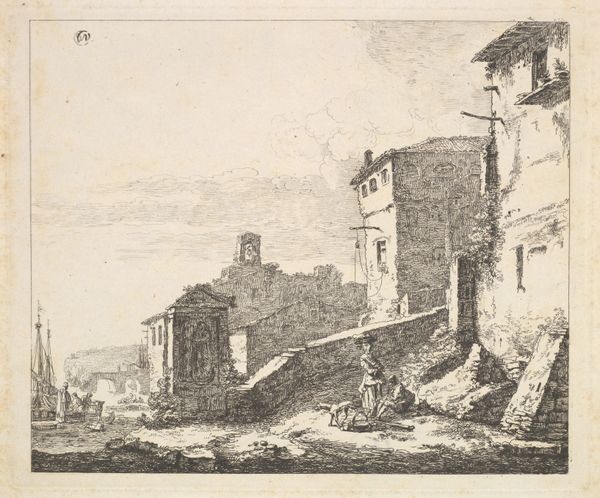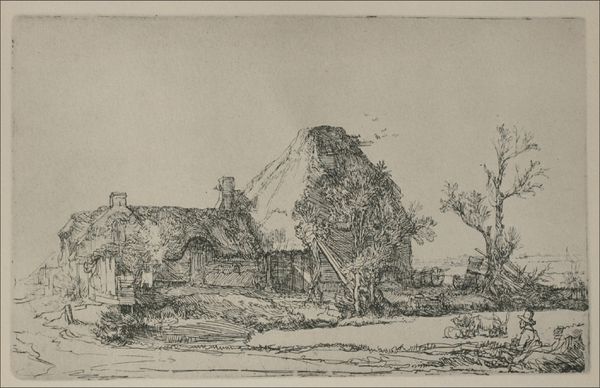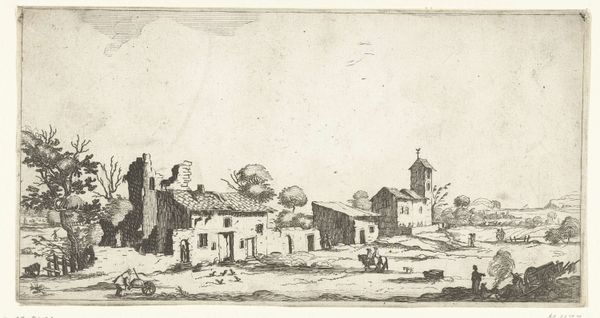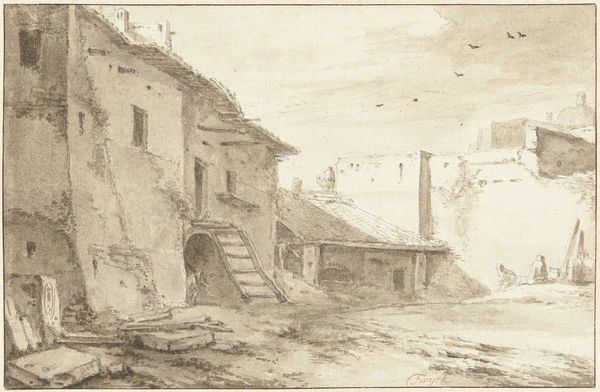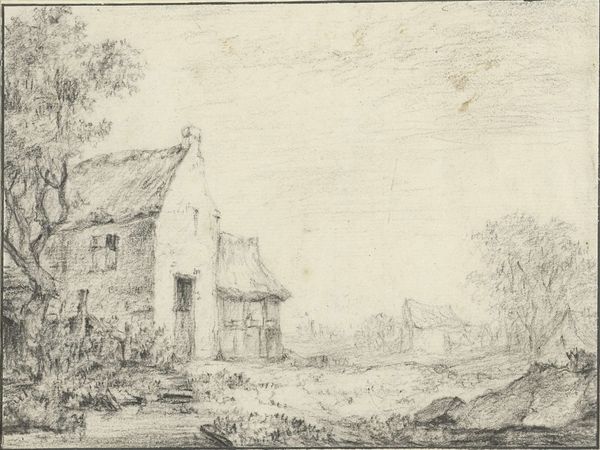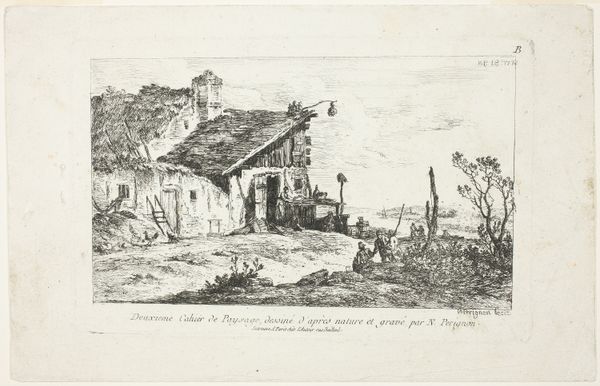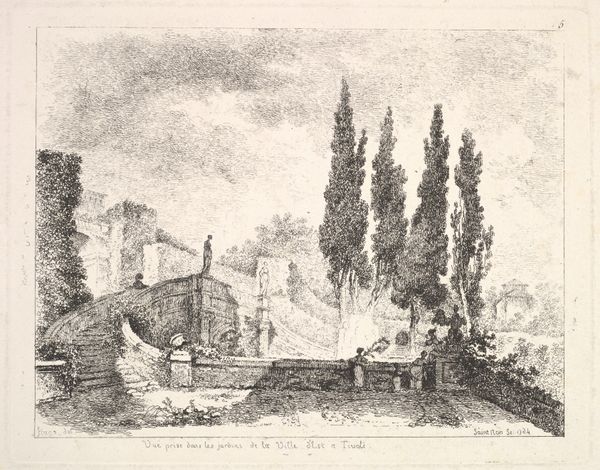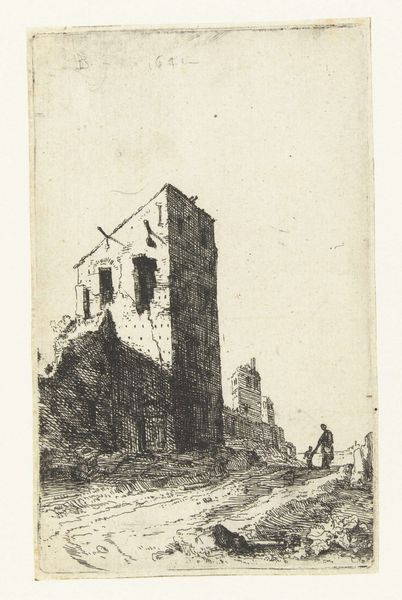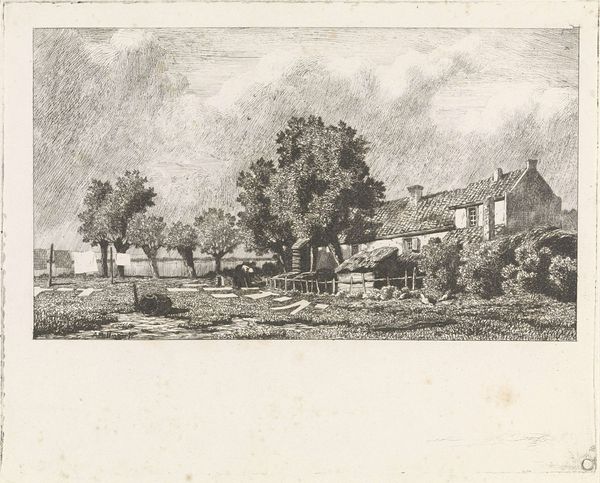
drawing, print, etching, paper
#
drawing
#
neoclacissism
# print
#
etching
#
landscape
#
etching
#
paper
#
15_18th-century
Dimensions: 111 × 178 mm (plate); 160 × 250 mm (sheet)
Copyright: Public Domain
Curator: Welcome. Before us hangs Nicolas Pérignon's etching, "Landscape, from Deuxieme Cahier de Paysage," created in 1772. It's a lovely example of his printmaking during the height of Neoclassical influence. Editor: My immediate impression is that it captures a certain stillness, a quiet humanness. The buildings seem organically built up on the landscape and imbued with the life that animated them. Curator: The etching process itself, using acid to cut the design into the metal plate, is interesting here. Think about the labour and time required for Pérignon to build the plate before even making impressions. What statements are we making about production when art uses these techniques? Editor: It's true. I wonder about the building itself, the home or business; in the history of its inhabitants, the many untold stories locked in the structure. Look at that covered stairway, surely that signifies something of private entrances. Curator: You're seeing it as a symbol, a record, while I’m pulled in by the labor it signifies. However, in 18th century France, Neoclassicism meant order. A "return to reason." I'd expect cleaner lines, more deliberate compositions rather than the everyday reality portrayed in this rural depiction. Editor: True, Neoclassical architecture in painting is quite imposing. But maybe the symbol of the humble, everyday landscapes can also tell of greater forces in human history; the rise of everyday folk into a modern sense of belonging. Curator: Perhaps. Although even the ‘everyday’ has material conditions. Think about paper, imported textiles in people's clothing... This image doesn’t only signify place, but networks of commerce and consumption. Editor: Well, my mind is sticking with its potential hidden symbology. But it is helpful to acknowledge both as co-existing at that time; to understand how landscapes become intertwined with their inhabitants Curator: Yes, and it’s in those conjunctions, in thinking about both the literal and symbolic, where meanings emerge. Editor: Indeed. This etching seems so straightforward, and it can reveal much about past realities that connect deeply within all of us today.
Comments
No comments
Be the first to comment and join the conversation on the ultimate creative platform.
